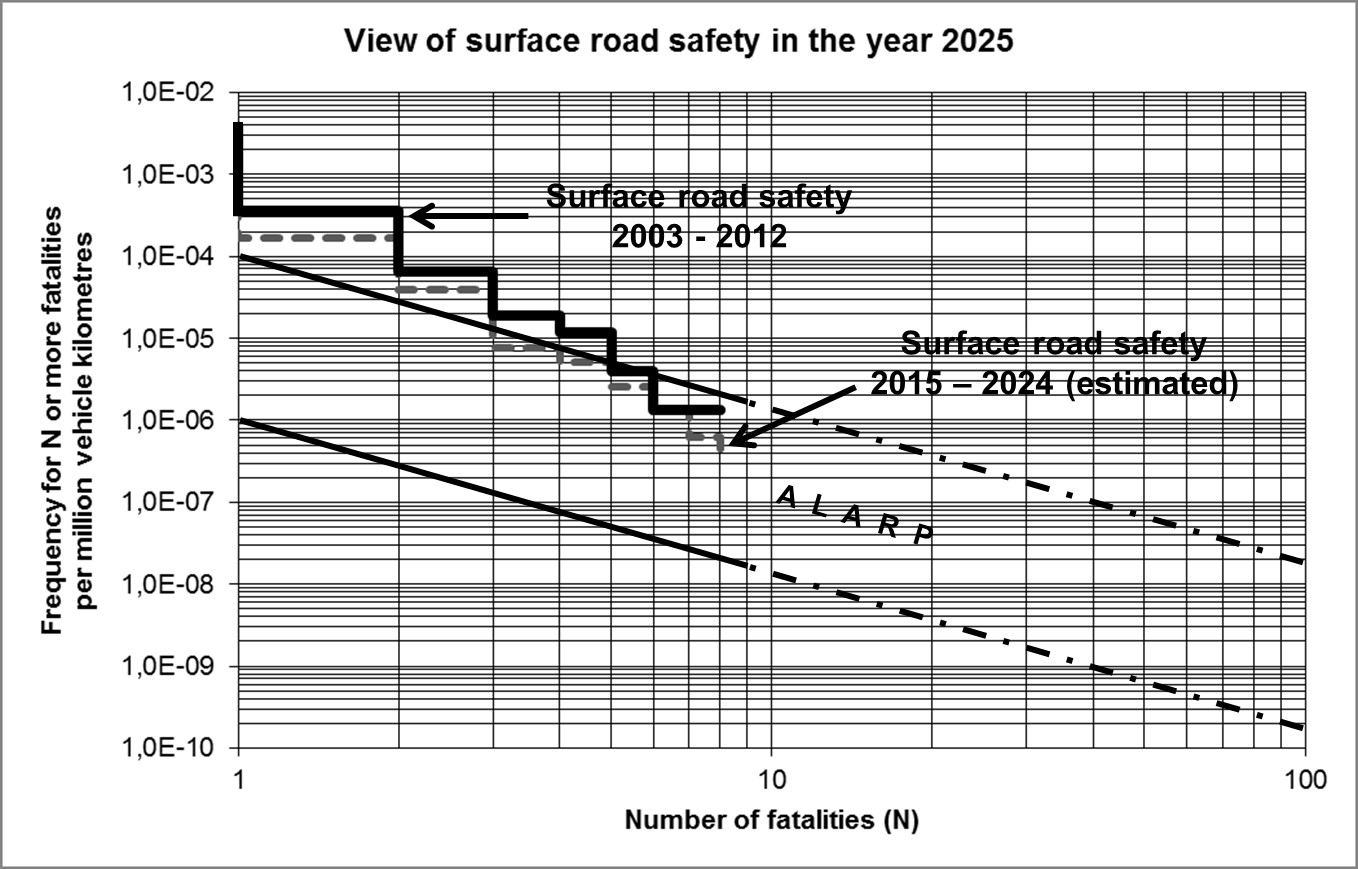Safety in Road Tunnels – Safety Target Proposal
Abstract
The purpose of this paper is to propose a quantitative target for assessment of life safety in road tunnels and describe how such a target can be utilized and developed further. The target is developed from an analysis of initiating events, accident statistics and analytical approaches and it makes it possible to tailor the safety concept in individual tunnels to meet the target by means of quantitative risk analyses. The results indicate that the practice proposed is beneficial for both quality and transparency in the decision-making, as well as it can be judged to have the potential to improve cost-efficiency in the safety related work. It is concluded that the target should be calibrated and evaluated with data from real tunnels before implementation and that the resulting safety level from present ruling is assessed. Also, it is concluded that the total cost to realize the safety target is assessed. It is recommended to put more effort on general accident prevention in tunnels compared to surface roads in order to reduce the number of events that may escalate beyond control. It is also recommended that the road tunnel safety learning processes are improved by routine collection, compilation and evaluation of data on road tunnel accidents as well as vehicle-fires and dangerous goods accidents in road traffic as a whole.
References
Lindberg, E., & Morén, B. (1994). Risk analysis method for transportation of dangerous goods on road and rail road. VTI-report 387:1.
Lundin, J. (2019). Quantification of a Safety Target for an Underground CNG Bus Terminal in Stockholm. Fire Safety Journal, 104, 57-66. https://doi.org/10.1016/j.firesaf.2019.01.005
Malmtorp, J., Lundin, J., & Vedin, P. (2014). Life safety in road tunnels – A safety target proposal. The Swedish Road Transport Administration publ. nbr: 2014:124.
Norwegian Public Road Administration. (2011). Development of a best practice methodology for risk assessment in road tunnels.
PIARC. (2007). Integrated approach to road tunnel safety.
PIARC. (2008). Risk analysis for road tunnels.
PIARC. (2011). Road Tunnels Manual.
PIARC. (2012). Current Practice for risk evaluation for road tunnels.
Slovic, P. (1997). Trust, Emotion, Sex, Politics, and Science: Surveying the Risk Assessment Battlefield. University of Chicago Legal Forum, 1, Article 4.
Strömgren, P., Berg, S., Ekman, A. K., & Bergström, K. (2014). The accessibility and safety of Swedish tunnels, The Swedish Road Transport Administration, 2014.
Swedish National Board of Building, Housing and Planning. (2005). Risk Analysis Methods - DP 2.2, Life-safety in tunnels.
Swedish Rescue Services Agency. (1997). Evaluation of risk.
Swedish Road Transport Administration. (2004). Design requirements and recommendations for tunnels. Publ,124.
Swedish Transport Agency. (2019). Yearly accident data from 1950, accidents reported by the police. Retrieved from http://www.transportstyrelsen.se
Tingvall, C. (1997). The Zero Vision. In: von Holst H., Nygren Å., Thord R. (eds) Transportation, Traffic Safety and Health. Springer, Berlin, Heidelberg. pp. 37-57. https://doi.org/10.1007/978-3-662-03409-5_4
Transport Analysis in Sweden (Trafikanalys). (2019). Information about the vehicle mileage per year by Swedish-registered cars, lorries, buses and motorcycles in a year.


This work is licensed under a Creative Commons Attribution 4.0 International License.
Copyright for this article is retained by the author(s), with first publication rights granted to the journal.
This is an open-access article distributed under the terms and conditions of the Creative Commons Attribution license (http://creativecommons.org/licenses/by/4.0/).








1.png)














